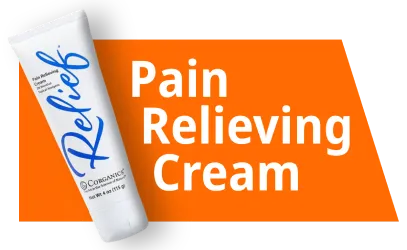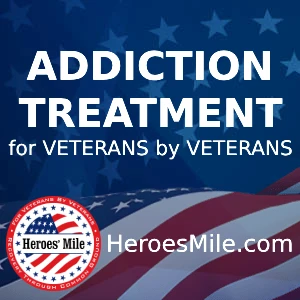People who live with chronic pain often depend on various treatment interventions to get by. One of these approaches to treatment is taking opioid medications. However, having access to this type of medication has become harder over the years as a result of guidelines put in place by the Centers for Disease Control and Prevention (CDC). This has left many people living with chronic pain without many other options.
But just recently, the CDC updated these guidelines for prescription opioids. So, what does this mean for you and your pain management plan? Let’s look closer at all the details of this new development.
Breaking Down the Old Guidelines

In 2016, the CDC released a set of guidelines for medical experts to follow when prescribing prescription opioids. Those guidelines ended up influencing law-makers into putting further restrictions on the act of prescribing opioids. The fallout from this impacted many people who relied on opioid medications as a way to manage their pain.
For those who were in need of medication, it limited their access to this method of safe and effective treatment. They were forced to go through other means to get the medication that they needed—some of which, such as going to the emergency room, ended up costing patients more time and money than they could afford. Other means of accessing this type of medication were illegal and dangerous, leaving patients at risk for overdose and even death.
For the people who were already on medication when the restrictions were put in place, it left them with health risks as well. Many people lost access to their medication or weren’t able to continue on the same dose that they were on before. As a result, they were left with uncomfortable withdrawal symptoms, which, in addition to the return of their pain, could include:
- Nausea and vomiting
- Difficulty sleeping
- Worsened mental health symptoms
- Loss of appetite
- Heart palpitations
- Seizures
The goal behind these old guidelines was to address the nationwide opioid crisis. Unfortunately, there were cases in the past in which opioids were too readily available or they were prescribed without proper guidance from medical experts. The CDC recognized that this left people at risk for addiction.
But in their attempt to address the risk of opioid addiction, the CDC’s old guidelines left people with chronic pain without any effective alternatives. Of course, having unmanaged pain brings a whole other set of concerns for people who have chronic pain. When the pain begins to interfere with your ability to work, socialize, or just enjoy life, something needs to change. This is where the new guidelines might play a different role in how policy makers apply them now.
How Are the New Guidelines Different?
To begin, the CDC emphasized that this new set of guidelines is meant to act as a starting point for doctors and patients to work together to decide what type of treatment will be best. CDC officials state that their recommendations should be taken as a guide rather than a strict set of rules. Coming up with a treatment approach should always be based on the individual’s specific medical history and current symptoms.
Additionally, the focus with these new guidelines has shifted to improving the quality of life for people with chronic pain rather than trying to tackle the opioid crisis entirely. While taking the risks of opioid addiction into account, the CDC also recognizes the potential benefits that opioids could have for patients.
Furthermore, these updated guidelines take into account the research on opioid-related casualties. Research shows that many of the fatal overdoses that occur are due to illegally obtained opioids, which are often mixed with other dangerous drugs, like fentanyl. This isn’t to say that prescribed opioids can’t be misused—this is still a reality that some people with chronic pain end up facing.
However, CDC representatives want to make it clear that this shouldn’t stop doctors from prescribing opioids entirely. Before prescribing opioids, the CDC recommends utilizing all other treatment options first. This is especially true if the patient is at risk for developing a substance use disorder. Then, if these methods are ineffective, doctors can consider prescribing opioids at least until a better pain management plan is put in place.
What Other Treatment Options Are There?
The treatment options for chronic pain vary depending on the cause behind the pain. Always speak with your doctor before trying any pain management techniques. That said, some of the most effective treatment options for people with chronic pain would be:
- Physical therapy
- Doing the right exercises and stretches
- Taking anti-inflammatory medications
- Doing aromatherapy
- Getting enough sleep
- Doing cognitive behavioral therapy
- Speaking with others who understand chronic pain
Having your pain under control can help to improve the overall quality of your life. You might find that you have more energy, less mental health struggles, a stronger immune system, and even more benefits when your pain is well managed. Sometimes, the above treatment options are enough to help with the pain. But there are other times where more is needed to get you to a place of comfort.
In situations where opioids are necessary to manage the pain, be sure to communicate with your doctor about any changes in symptoms—physical, emotional, and mental. It’s also important to keep an eye out for the warning signs of an opioid dependency, such as using the medication outside of its prescribed dosing. If you do struggle with an addiction to opioids, know that there are treatment facilities that can help you to manage your mental health without jeopardizing your physical comfort.
Perhaps the biggest takeaway from the new CDC guidelines is the recognition that chronic pain is a pressing issue for people throughout the entire country and beyond. With limited treatment options and the risks that come with others, more is needed to address this problem.
As medicine and technology advance, additional or alternative treatment options will begin to be more accessible for people. Until then, people with chronic pain can continue to get support by reaching out to one another through platforms such as the Pain Resource Community, raising awareness about chronic pain, and advocating for the type of treatment that would benefit them most.
[su_box title=”Opioid Addiction Assistance” box_color=”#790202″ id=”Opioid-Addiction”]If you or a loved one needs help with behavioral health or drug & alcohol addiction, please find a facility that can help as soon as possible.[/su_box]
What are your thoughts on this article?
Please share in the comments below!
What topics related to depression would you like to see us cover next?
Email us at info@painresource.com with your ideas.
Did you know we have different groups for different conditions?




